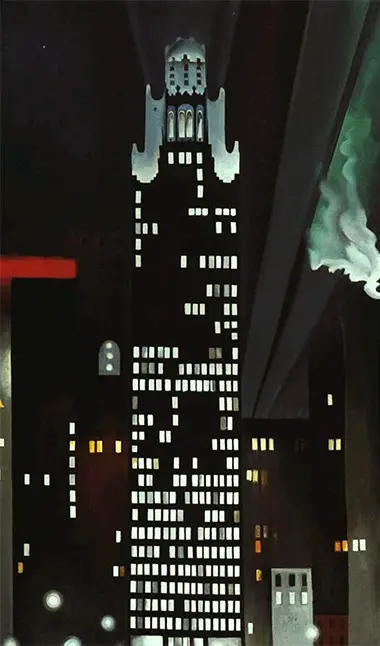"Radiator Building at Night" is a stunning example of Georgia O'Keeffe's distinctive artistic style. A pioneering modernist painter, O'Keeffe frequently painted bold, graphic depictions of American skyscrapers; in doing so, she took the art deco architectural style that was in vogue at the time and adapted it for two-dimensional designs.
In this painting, O'Keeffe combines art deco architecture with almost abstract painting; this is most evident in how the elegantly-crafted pinnacle of the building sits atop an erratic row of lights, the main body of the skyscraper rendered simply as a mass of rectangles against a black backdrop.
A body of mist can be seen drifting across from the right-hand side of the scene, providing an organic shape that contrasts with the rigid, artificial designs of the buildings. Lights, in different shapes, dot the scene: a red light looms over the top of the building on the left; searchlights illuminate portions of the night sky; and the spherical glows of streetlights line the road below.
"Radiator Building at Night" was painted in 1927, something of a golden year for skyscraper imagery: over in Germany, film director Fritz Lang had used similar art deco designs in creating a city of the future for his film Metropolis.
This should, perhaps, underline that the simplest description of O'Keefe's painting is modern. But yet, it is a vision of a modern America that has itself become vintage.
This contrast makes "Radiator Building at Night" an irresistible image. IT depicts a future that never was - but which, perhaps, should have been.
